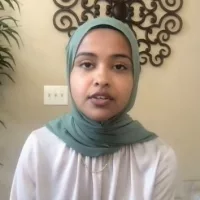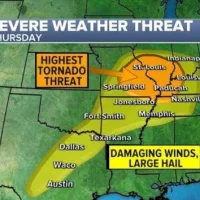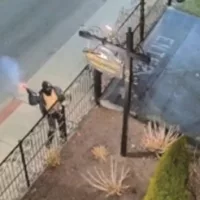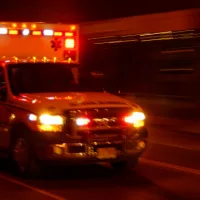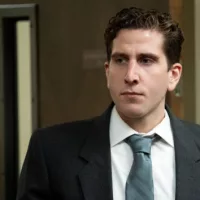
 iStock/Thinkstock(RICHMOND, Calif.) — In Richmond, California, two police officers pulled over a car with four men for what was supposed to be a routine traffic stop.
iStock/Thinkstock(RICHMOND, Calif.) — In Richmond, California, two police officers pulled over a car with four men for what was supposed to be a routine traffic stop.
But it turned into an armed stand-off.
The driver had a gun out in plain view. The officers yell at him not to move, put his hands up. The driver finally put his hands on the steering wheel, away from the gun.
The officers weren’t sure if the three passengers were also armed so they called for backup. As they waited, Officer Ben Therriault decided to make a move. He put his gun back in his holster, grabbed a gun from the car’s floorboard and put it on top of the car. He then asked the driver to step out of the car and put his hands behind his back.
Turned out there were two loaded guns in the car.
Over the three tense minutes, there were infinite ways the traffic stop could have turned deadly. In the end, it didn’t. Officer Therriault said he had legal justification to shoot, but chose not to.
“The difference is … I had been in that situation before,” he said. “If he was to reach for that gun a little bit more, that’s it I can’t wait anymore … training is probably the key part of why that went down the way it did.”
Richmond is a small city with a big gun problem and the tension between “black” and “blue” is palpable, but traffic stops across the country are always a dangerous intersection of unknowns.
Until recently, Richmond had among the highest homicide rates in the country and with so many guns on the streets, officers have to be on their game.
“It can be a pretty dangerous job which is why we place such a high priority on training, on using good tactics, reinforcing good habits,” said Richmond Police Chief Allwyn Brown. “[So] that they’re able to safely defuse these situations and confiscate weapons without gunfire.”
More often than in many police departments, all officers in Richmond are required to go through specialized role-play training every few months. The purpose is put officers in scenarios like traffic stops, where they have to assess a situation and make split-second decisions that could mean life or death for them or the driver.
They practice trying to deescalate a situation using words. For example, in one training scenario where an officer was faced with a suspect who turned out to be trying to commit “suicide by cop,” Captain Louie Tirona instructed his officers to get “the guy to start talking about what his problem is. What’s your name, what’s going on, how can I help you?”
They are trained to be transparent about what they are doing and why, while being vigilant to look for signs of a threat, like a gun. Then, when necessary, don’t hesitate to use their own gun.
At a time when our nation is at a crossroads, grappling with issues of race and justice, fatal encounters that started as traffic stops, like with Samuel DuBois in Ohio, Walter Scott in South Carolina, Sandra Bland in Texas and Philando Castile in Minnesota — all involving a police car, a camera and a person of color — have become disturbingly familiar. The traffic stop itself has become a flashpoint.
Diamond Reynolds was in the car when Castile, her boyfriend, was shot by police during a traffic stop last week. She streamed the tragic aftermath live on Facebook.
Inspired by Reynolds’ seemingly calm demeanor, Coffey Anderson, a bi-racial country singer, made a video showing a lesson his father taught him that explained what drivers can do to diffuse tensions at traffic stops and keep everybody, including the officer, calm.
Not all of the feedback from Anderson’s video has been positive.
“It says, ‘Doesn’t this contribute to the “blaming the victim?”‘ and my response … was, ‘I hope it doesn’t. I pray that it helps diffuse the tension between police and drivers, when a traffic stop occurs,’” he told “Nightline.”
It isn’t just drivers who are in peril, police also face serious risks when they pull someone over.
Just this past Wednesday, a police officer in Georgia was dragged down the road after he approached a car with a driver he noticed was asleep at the wheel. The driver took off and pulled the officer with him. In the end, no one was hurt, but the driver is now facing various charges.
In 2013, Deputy James Boyd pulled over a 1991 Cadillac in Booey, Texas. He didn’t know at the time that the driver, Evan Ebel, was a convicted felon and wanted for two murders in Colorado.
As the deputy approached the car, Ebel fired four shots at close range, hitting Boyd twice.
“All I can remember is seeing blood pouring down my face and landing on my hands,” Boyd said. “Wasn’t able to make it to my patrol car, I was too weak at that point.”
Ebel took off and was chased by police before crashing into a truck. His car was sprayed with a barrage of police bullets. He later died.
Dashcam video showed Boyd lying on the side of the road until finally a Good Samaritan found him and called for help.
Boyd had a long and painful recovery, but three years later, he was back on patrol.
“I went back because it’s what I know, it’s what I love doing,” he said. “I love being able to get out there and granted most people don’t like police officers. If I wanted to be liked, I’d been a fireman.”
His wife Patricia Boyd is grateful for every day they have together.
“Honestly, there’s always that feeling in your stomach when they leave,” she said. “You never know if they’re going come back that night.”
“We don’t have the luxury of being able to wait and decipher through every single decision,” James Boyd added. “If we sit there and wait, it could cost us our lives, a victim their lives, or an innocent civilian their lives.”
Copyright © 2016, ABC Radio. All rights reserved.






